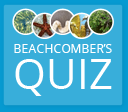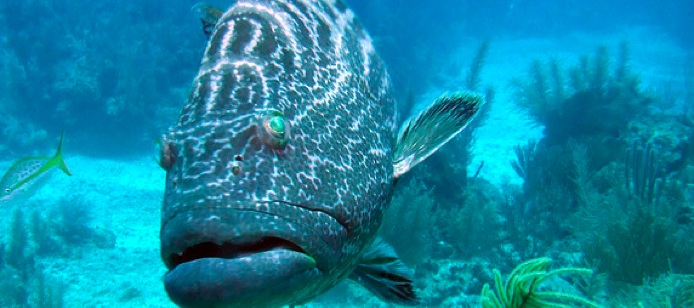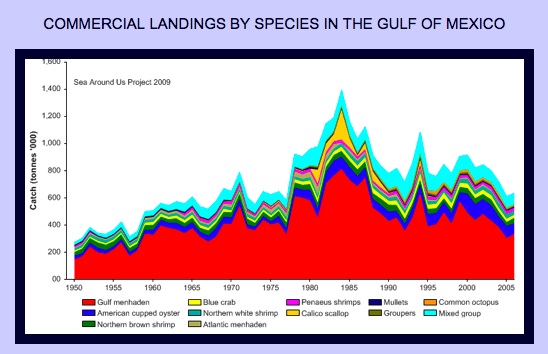- Marine Protected Area, or MPA, is an umbrella term used to describe a wide range of marine areas that restrict human activity to protect living, nonliving, cultural and/or historic resources.
- In Florida, MPAs that restrict fishing and habitat disturbance help protect Florida’s economically and commercially important fish species.
- The commercial fishing and sport fishing industries are very important to Florida’s economy, bringing millions of dollars in revenue to our state each year.
- Commercial fishing is the practice of capturing fish and other marine species to earn a profit, while sport fishing is fishing for the purpose of consumption, pleasure, or competition.
- In recent years, overfishing (the practice of harvesting fish faster than they can reproduce) has depleted many fish populations in the Gulf of Mexico and elsewhere.
- Commercial fishing pressure is intense. Many Gulf of Mexico fish populations, including species in the Grouper and Snapper families, are at risk of becoming endangered or extinct in the next fifty years if we continue to harvest them at current rates.
- The practice of shrimping (fishing for shrimp) has high bycatch rates.
- Bycatch refers to organisms that are unintentionally caught while targeting an alternative species. Bycatch often does not survive, even when released, and as a result depletes numerous populations of non-commercially fished species.
- Marine Protected Areas are one way in which we can protect the future of local and global fish populations.
- MPAs can be located in any marine environment, including the open ocean, coastal areas, intertidal zones, and estuaries.
- MPAs offer marine species an area to reproduce, recover, and thrive – which may result in healthier fish populations, higher catch rates outside MPAs, and a more promising future for the fishing and seafood industries in Florida.
- There are many types of MPAs, including marine reserves, marine sanctuaries, and marine conservation areas. MPAs are managed by various local, state, and federal agencies, depending on their type, location, and management requirements.
- The level of protection in an MPA differs based on MPA type and oversight. Some MPAs allow limited human recreation and/or fishing, while others completely prohibit human entry.
- Currently, MPAs make up only 1% of the global ocean area, leaving the other 99% open to fishing and other human activities.
- Global marine ecosystems are interconnected by water circulation, highly migratory species, and many other factors. We can think of the global ocean as one very large ecosystem.
- By creating a global network of MPAs, we can better protect marine species worldwide, and significantly improve the condition of global fisheries. Many countries around the globe are currently working towards the goal of establishing a comprehensive network of MPAs by 2012.
- In order for MPAs to be effective, human activity must be monitored and restrictions enforced to ensure that visitors follow all rules and regulations.
- Often, the establishment of MPAs insights for public debate. There are benefits and costs associated with establishing any type of protected area:
Benefits may include:
- Improved water quality
- Species protection
- Long-term economic benefits (more tourism and higher catch rates)
Costs inlcude:
- Recreational restrictions
- Fishing restrictions
- Cost of monitoring
Case Study: Florida Keys National Marine Sanctuary (FLKNMS)
- In 1996, a 2800 m2 area around the Florida Keys was designated as a Marine Protected Area: The Florida Keys National Marine Sanctuary. This area is home to ecologically important coral reefs, seagrass beds, mangrove forests, and hundreds of thousands of marine species.
- Some sections of the marine sanctuary prohibit human entry, while others allow restricted recreational activity, including fishing, snorkeling, and SCUBA diving.
- Within the FLKNMS, there are species-specific Wildlife Management Areas, which are managed to protect the habitat of species at high risk of becoming endangered or extinct.
- In the FLKNMS, boats are not allowed to anchor, but they can tie up to mooring buoys. This restriction reduces damage to coral reefs and seagrass beds.
- Ongoing research and monitoring of the FLKNMS has shown a gradual improvement in the health of the ecosystem. Currently, better enforcement and a re-evaluation of the management plan is needed.
Practice Good Stewardship
- When you visit a Marine Protected Area, make sure you know and follow all rules and regulations.
Podcast: Marine Protected Areas
Review Questions
- What is overfishing? Give an example of an overfished species in the Gulf of Mexico.
- What is a Marine Protected Area? How can MPAs protect our marine resources?
- Why is it important for countries to work together to create a global network of MPAs?
- List three ways in which MPAs offer protection to marine species.
Glossary
Bycatch: Any marine organisms caught unintentionally by fishermen while intending catch other species.
Catch Rates: The amount of fish caught during a specific period of time.
Commercial Fishing: Capturing fish and other seafood to earn a profit.
Endangered: At high risk of becoming extinct.
Estuary: A coastal body of water where freshwater and saltwater mix.
Extinct: No longer in existence.
Highly Migratory Species (HMS): Fish species that undertake migrations of significant distances throughout ocean waters for feeding or reproduction.
Intertidal Zone: The area that is underwater at high tide and exposed to air during low tide.
Marine Protected Area (MPA): An area where natural resources are given greater protection than in the surrounding waters.
Natural Resource: A naturally occurring material that is valuable to people and/or wildlife.
Overfishing: The practice of fishing a body of water to a degree that the supply of fish or shellfish is exhausted and the nearby ecological balance is upset; the removal of fish from the water faster than they can reproduce.
Shrimping: The practice of harvesting shrimp for commercial use; usually involves the use of trawl nets, which are dragged across the ocean floor.
Sport Fishing: Fishing for the purpose of pleasure or competition.
Water Circulation: The continuous movement of water on, above, and below the surface of the Earth.
Wildlife Management Area: A designated space within a Marine Protected Area that is managed to protect the habitat of species at high risk of becoming endangered or extinct.







